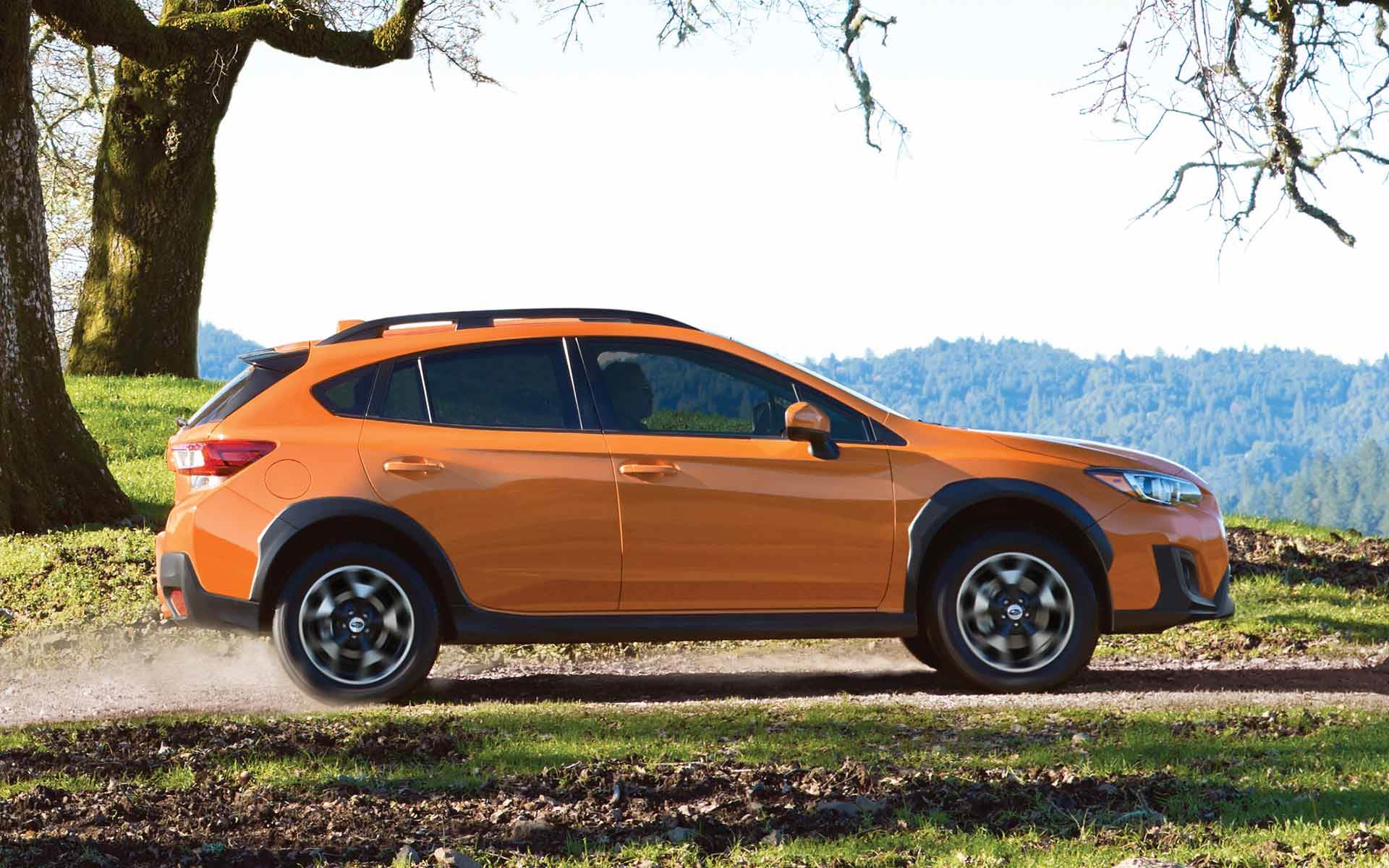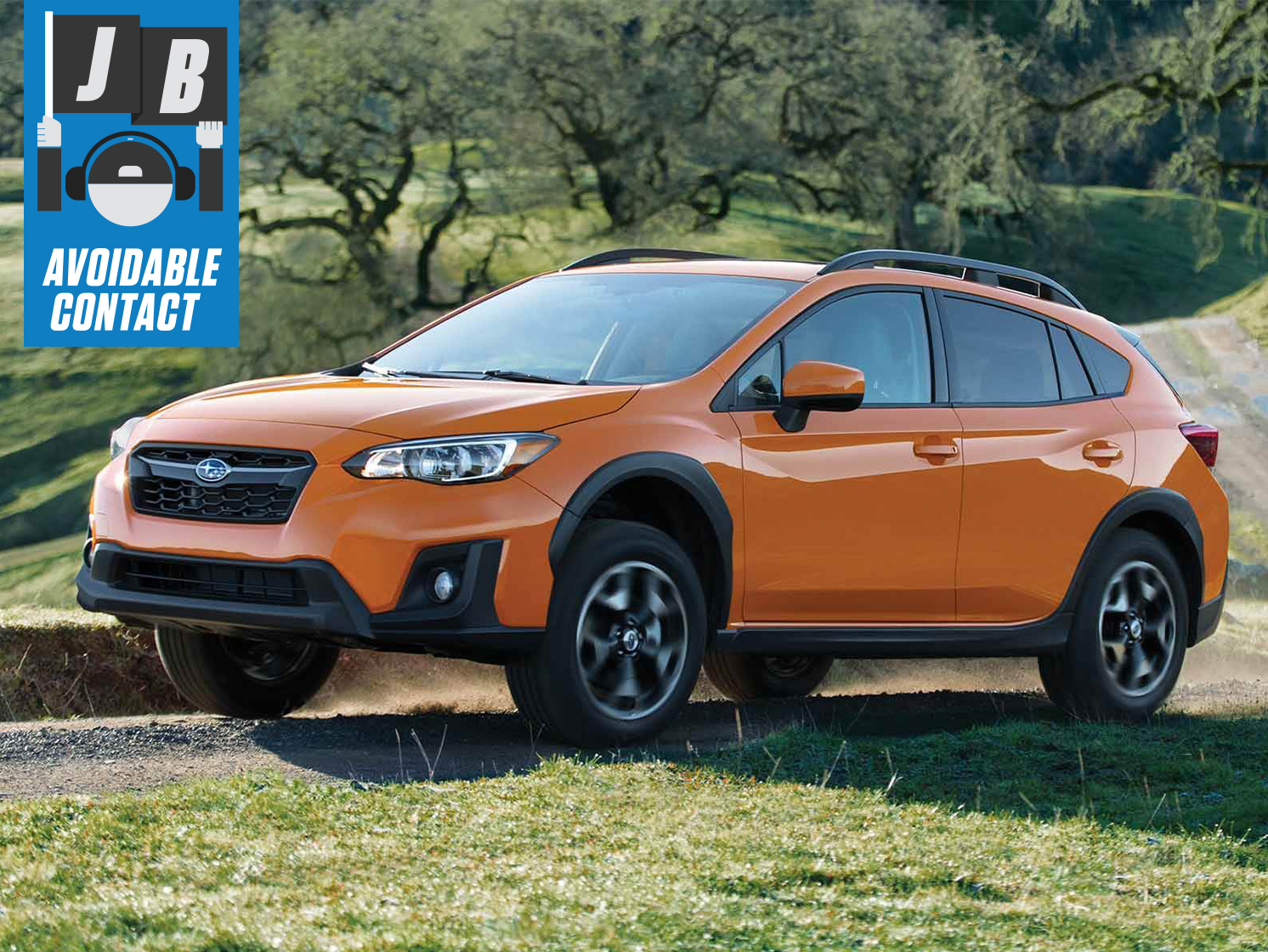The crazy case of the crashing Crosstreks
What does the Subaru Crosstrek have in common with the monarch butterfly? More than you’d think. They’re both bright orange—well, the Crosstreks you’ll see in advertising and at the front rank of dealer lots are, anyway. They’re both considered by their advocates to be good for the environment; the butterfly because it’s a major pollinator, and the Subaru because it’s an alternative to larger, more wasteful crossovers and SUVs. Last but not least, they’re both a little bit worrisome to consume. Monarchs contain large concentrations of compounds which are at the very least foul-tasting and sometimes just plain poisonous, while Crosstreks happen to be the most accident-prone vehicle in the road over the past seven years.
Insurify, an insurance comparison-shopping website, arrived at this conclusion after studying 1.6 million insurance quotes. Which means this factoid is probably not exactly set in stone, and it’s not exactly clear how it accounts for number or proportion of the vehicles in question. Nevertheless, Insurify claims that 26 percent of the Crosstreks on the road have been involved in an accident, compared to 14 percent as an average for the American fleet. This is enough of a variance to be statistically significant. What gives? Why is it the Crosstrek, and not, say, the Ford Mustang Shelby GT350, or the McLaren 650SS?
It might be helpful for some of the Hagerty audience to describe what a Subaru Crosstrek actually is, insofar as most automotive enthusiasts will never come any closer to one than they feel they need to in order to get the thing to stop blocking the left lane of traffic. Basically, it’s the same as the long-departed Subaru Outback Sport, which is to say it’s a Subaru Impreza subcompact hatchback that has been lifted a few inches and given some freaky-lookin’ body cladding to signify off-road toughness. It’s called a Crosstrek because Subaru decided some time ago that its “Outback” model designation was too precious, and too profitable, to be applied in a manner than might confuse or anger customers. Gosh. If only someone at Oldsmobile had felt that way—but then again, who didn’t love the Cutlass Calais 442 W41?
The Crosstrek is that rarest of man-made objects in 2019: a genuinely slow car. Some of them take more than 10 seconds to reach 60 mph; the fastest variants rarely make it to the end of a quarter-mile doing more than 81 or 82 miles per hour. They’re also not exactly awe-inspiring in terms of handling ability. Take a cheap subcompact on slippery tires, then raise it a few inches for no discernible reason, and you’ve got yourself a Crosstrek. The general dynamic envelope seems to be best-described as “1990 Camry, plus it leans a lot.”

Your humble author is a 40-year subscriber to the school of thought that equates greater vehicle capabilities with superior “active safety,” so I’m immediately tempted to make the case that the Crosstrek crashes more often because it lacks the ability to get itself out of trouble. Is there a difficult merge ahead? You’d probably rather be in something with plenty of power and massive brakes. Has something fallen off the truck directly ahead of you on the freeway? This would be a good time to have wider tires, stiffer springs, and maybe a little bit less clear air between the road surface and your center of gravity.
The only problem with this assertion is that the Crosstrek isn’t the slowest, or least grippy, vehicle on the road. Not by a long shot. The Prius is slower and handles worse, while many full-sized pickups suffer from a similar lethargy while offering even less ability to steer themselves out of trouble. Let’s not forget the fact that the Crosstrek is probably better than most cars in bad weather or on low-grip surfaces, where its AWD makes effective use of its mud-and-snow-rated tires.
Could it be an issue of low exterior visibility or poorly designed controls? I suspect not, because were that the case you’d see the same things happening with the Subaru WRX and STI, both of which share the vast majority of their engineering with the Crosstrek. The electronic active safety measures of the Crosstrek are equal to what’s provided elsewhere in the lineup. It even has Pre-Collision Braking, for Pete’s sake.
At this point, some of my older readers have likely visually inspected the Crosstrek a bit and noticed that it’s a tall, short-wheelbase vehicle with off-road pretensions—a description which over time has been applied to the Jeep CJ-5, the Suzuki Samurai/Sidekick, the Isuzu Trooper, and various other vehicles with a purported propensity for turnin’ turtle when the road curves. In this case, however, appearances are a bit deceiving. The Crosstrek’s wheelbase is about the same as that of a Ford Fairmont or a Cutlass Ciera. The center of gravity is relatively low thanks to the boxer engine and considerable amount of drivetrain hardware. I don’t think you could roll one with the stability control engaged. So that has to be ruled out.
Could it be that the distinctive orange color of many Crosstreks causes drivers to target-fixate on them in sticky situations? Laugh if you want, but I’ve seen plenty of cases both on and off racetracks where drivers simply aimed their car for the brightest color and stood on the brakes with both feet. In this case, however, it’s probably a stretch to suggest that optics are involved.

If it’s not the car, the color, the height, or the stability control, what could it be? With no clear theory to pursue at this point, I looked at the #2 car in the Insurify bottom-10 list. It’s the Honda HR-V. The rest? Hyundai Elantra GT, Infiniti Q50, Subaru WRX (hmm…), Mazda3, Acura ILX, Lexus CT, Chevrolet Trax, and Hyundai Santa Fe Sport. If we dismiss the budget-Bimmer for the Jersey Shore known as the Q50, this is really a list of small cars with out-of-the-ordinary pretensions. Some think they are sporty, some think they are off-roadish, some think they are upscale, and the Chevrolet Trax… well, it starred in a Transformers movie.
So here’s one hypothesis: These cars are involved in more accidents in which they are not at fault because they are relatively small and therefore less likely to be noticed than, say, a Suburban LTZ would be. And they are involved in more accidents in which they are at fault because they attract younger, less experienced drivers who are drawn to the non-enthusiast aspects of off-road cladding, hybrid powertrains, or compact-luxury branding. Put those two factors together and that’s enough to make a difference in accident rates.
This is a dangerous hypothesis for a few reasons, not least because it hews close to the currently-unpopular notion that individuals, not machines or systems, are to blame for a wide variety of unpleasant outcomes in modern society. So let’s back away from it and return to safer territory: Crosstreks appear to be in quite a few crashes. To reduce your risk, just think like a bird: keep your eyes open, look down the road to what’s going to happen rather than down your nose at what’s happening now, and be careful of the brightly-colored bugs—or cars—in your vicinity, lest you wind up spitting mad.


